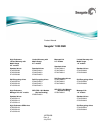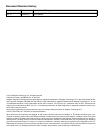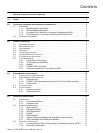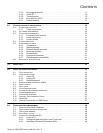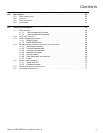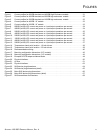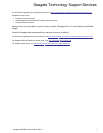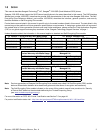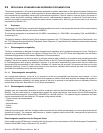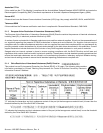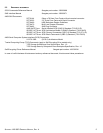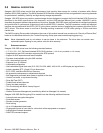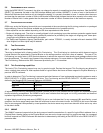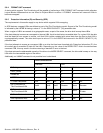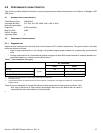SEAGATE 1200 SSD PRODUCT MANUAL, REV. A 3
2.0 APPLICABLE STANDARDS AND REFERENCE DOCUMENTATION
The drives documented in this manual have been developed as system peripherals to the highest standards of design and
construction. The drives depend on host equipment to provide adequate power and environment for optimum performance
and compliance with applicable industry and governmental regulations. Special attention must be given in the areas of
safety, power distribution, shielding, audible noise control, and temperature regulation. In particular, the drives must be
securely mounted to guarantee the specified performance characteristics. Mounting by bottom holes must meet the
requirements of Section 10.3.
2.1 STANDARDS
The Seagate 1200 SSD family complies with Seagate standards as noted in the appropriate sections of this manual and the
Seagate SAS Interface Manual, part number 100293071.
The drives are recognized in accordance with UL 60950-1 as tested by UL, CSA 60950-1 as tested by CSA, and EN60950-1
as tested by TUV.
The security features of Self-Encrypting Drive models are based on the “TCG Storage Architecture Core Specification” and
the “TCG Storage Workgroup Security Subsystem Class: Enterprise_A” specification with additional vendor-unique features
as noted in this product manual.
2.1.1 Electromagnetic compatibility
The drive, as delivered, is designed for system integration and installation into a suitable enclosure prior to use. The drive is
supplied as a subassembly and is not subject to Subpart B of Part 15 of the FCC Rules and Regulations nor the Radio
Interference Regulations of the Canadian Department of Communications.
The design characteristics of the drive serve to minimize radiation when installed in an enclosure that provides reasonable
shielding. The drive is capable of meeting the Class B limits of the FCC Rules and Regulations of the Canadian Department
of Communications when properly packaged; however, it is the user’s responsibility to assure that the drive meets the
appropriate EMI requirements in their system. Shielded I/O cables may be required if the enclosure does not provide
adequate shielding. If the I/O cables are external to the enclosure, shielded cables should be used, with the shields
grounded to the enclosure and to the host controller.
2.1.1.1 Electromagnetic susceptibility
As a component assembly, the drive is not required to meet any susceptibility performance requirements. It is the
responsibility of those integrating the drive within their systems to perform those tests required and design their system to
ensure that equipment operating in the same system as the drive or external to the system does not adversely affect the
performance of the drive. See Section 6.3, DC power requirements.
2.1.2 Electromagnetic compliance
Seagate uses an independent laboratory to confirm compliance with the directives/standards for CE Marking and C-Tick
Marking. The drive was tested in a representative system for typical applications and comply with the Electromagnetic
Interference/Electromagnetic Susceptibility (EMI/EMS) for Class B products. The selected system represents the most
popular characteristics for test platforms. The system configurations include:
• Typical current use microprocessor
• Keyboard
• Monitor/display
• Printer
• Mouse
Although the test system with this Seagate model complies with the directives/standards, we cannot guarantee that all
systems will comply. The computer manufacturer or system integrator shall confirm EMC compliance and provide the
appropriate marking for their product.
Electromagnetic compliance for the European Union
If this model has the CE Marking it complies with the European Union requirements of the Electromagnetic Compatibility
Directive 2004/108/EC as put into place on 20 July 2007.



